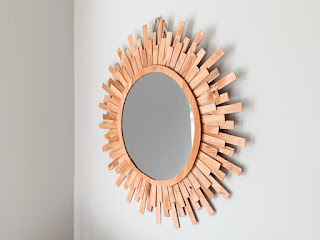Unleash Your Inner Artisan: Creative Woodworking Projects with Personalized Flair
Woodworking offers a unique blend of artistry and craftsmanship, allowing you to create personalized pieces that reflect your individual style and add a touch of warmth to any space. Forget mass-produced furniture; this article delves into exciting projects that empower you to design and build truly one-of-a-kind creations. Prepare to be inspired and discover the joy of transforming raw wood into breathtaking personalized masterpieces!
Personalized Cutting Boards: A Culinary Canvas
Elevate your kitchen with a custom cutting board that's as unique as your culinary adventures. Instead of a generic, store-bought board, imagine a handcrafted masterpiece featuring your family's initials intricately carved into the wood's surface, or perhaps a bespoke design inspired by your favorite nature scene. This project allows for endless customization. You can choose from various hardwoods, each offering a unique grain and texture, adding to the board's visual appeal and durability. Consider incorporating contrasting wood species for inlay work, creating stunning visual patterns.
Design Considerations for Your Cutting Board:
- Choose durable hardwoods like maple, cherry, or walnut for optimal performance.
- Sketch your design beforehand, ensuring it's proportionate to the board's dimensions.
- Use appropriate tools for carving, ensuring safety and precision.
- Finish the board with food-safe oil to protect the wood and enhance its natural beauty.
Engraved Wooden Signs: Tell Your Story
Capture cherished memories or inspiring quotes with custom-engraved wooden signs. These aren't your typical, mass-produced signs; they're personal narratives etched into beautiful, handcrafted wood. Imagine a rustic welcome sign for your front porch, showcasing your family name in elegant calligraphy. Or perhaps a motivational quote adorning your home office, serving as a daily reminder of your goals. The possibilities are as vast as your imagination. You can experiment with different fonts, wood types, and finishes to create a sign that perfectly reflects your personality and style.
Personalizing Your Wooden Sign:
- Select a wood type that complements your desired aesthetic (rustic pine, sleek walnut, etc.).
- Design your engraving using software or hand-drawn sketches; consider incorporating relevant symbols or imagery.
- Use a router or laser engraver for precise, professional results.
- Apply a protective sealant to safeguard the engraving and enhance the wood's longevity.
Custom-Built Bookshelves: A Literary Haven
Transform your reading nook into a personalized haven with custom-built bookshelves tailored to your specific needs and style. Don't settle for generic shelving units; create a masterpiece that blends seamlessly with your décor. Incorporate unique design elements such as curved shelves, hidden compartments, or integrated lighting. The ability to customize the dimensions, shelving configuration, and overall aesthetic allows you to perfectly optimize the space, ensuring that your beloved books are displayed in a stylish and functional manner. Consider adding personalized touches like engraved bookends or a custom-carved header.
Building Your Dream Bookshelves:
- Carefully measure your space to determine the optimal size and configuration.
- Select high-quality lumber and appropriate joinery techniques for durability.
- Plan your design meticulously, including details like shelf spacing and overall aesthetic.
- Finish the shelves with a stain or paint that complements your room's décor.
These are just a few ideas to spark your creativity. Remember, the key to truly personalized woodworking is to embrace your individual style and let your imagination run wild. So grab your tools, gather your materials, and embark on a journey of creative self-expression through the art of woodworking!




















